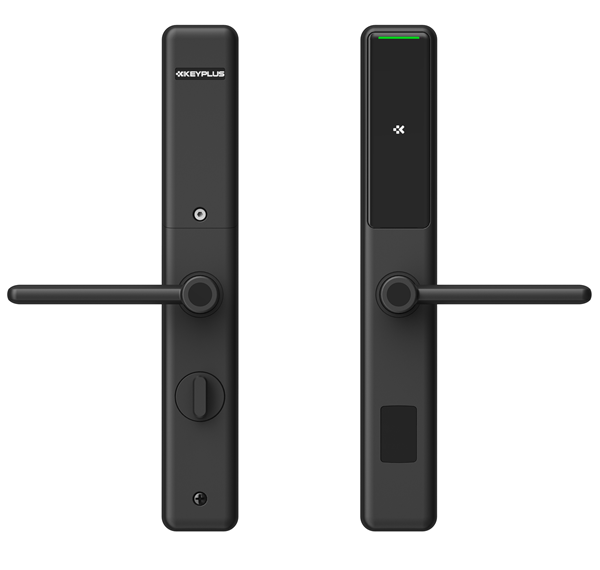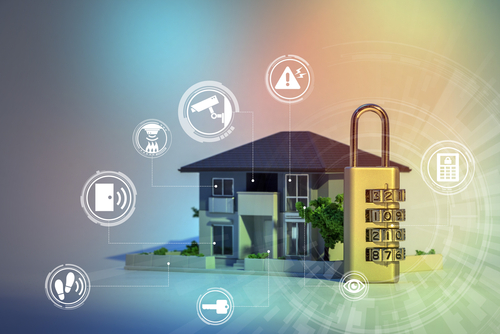Exploring the Function of Accessibility Control Systems in Enhancing Security Tools Performance and Effectiveness
Access control systems are increasingly acknowledged as vital components in the landscape of safety management, supplying a structured method to manage access to sensitive locations and information. Their ability to integrate with numerous security innovations, such as security cameras and alarm system systems, considerably improves the general effectiveness and efficiency of safety and security procedures.
Recognizing Accessibility Control Equipment
Access control systems play a crucial function in ensuring the security of numerous environments, from company workplaces to delicate federal government facilities. These systems regulate that can go into or exit an assigned area, therefore safeguarding assets and sensitive information. The fundamental elements of gain access to control systems consist of verification, identification, and authorization processes.
Recognition entails verifying a person's identity, generally through credentials such as essential cards, biometric information, or passwords. Once recognized, verification validates the person's right to access, often through multi-factor verification approaches to boost safety and security. Consent establishes the level of gain access to given, permitting for distinguished approvals based on duties within the company.
Accessibility control systems can be categorized into two main kinds: rational and physical. Physical accessibility control pertains to substantial areas, while sensible accessibility control governs electronic info systems. Both types function synergistically to supply thorough safety and security remedies.
Integration With Safety And Security Technologies
The assimilation of gain access to control systems with various other security innovations is necessary for developing an alternative security environment. By incorporating gain access to control with video clip security, breach discovery, and alarm system systems, organizations can boost their general safety and security pose. This interconnected framework permits real-time surveillance and quick action to security cases, improving situational recognition and functional performance.
For example, integrating gain access to control with video clip monitoring enables safety and security employees to verify gain access to events visually, making sure that just accredited people are approved entrance. Similarly, when access control systems are linked to alarm, any type of unapproved access attempts can trigger instant alerts, motivating speedy action.
Additionally, the assimilation of gain access to control with cybersecurity procedures is significantly vital in protecting delicate data and physical possessions. By straightening physical safety procedures with IT safety systems, companies can make sure that both physical and electronic access points are checked and controlled effectively.
Advantages of Boosted Safety And Security Procedures

In addition, boosted safety operations promote real-time monitoring and case feedback. With integrated systems that include security electronic cameras, alarms, and accessibility controls, security groups can quickly recognize and attend to prospective threats. This aggressive technique enables timely treatments, minimizing the probability of safety breaches and potential losses.
Additionally, reliable security operations add to a culture of safety and security within the company. Staff members are most likely to really feel even more safe and secure when they understand that durable steps are in place, bring about increased morale and productivity. Additionally, the use of data analytics from access control systems enables organizations to analyze safety and navigate to this site security trends, enhance policies, and designate resources effectively.
Factors To Consider and difficulties

Additionally, companies have to resolve the capacity for data violations. Accessibility control systems often deal with sensitive details, and any kind of vulnerabilities could subject this data to unapproved gain access to. custom security solutions. Making sure durable cybersecurity steps is necessary to safeguard against such risks
Individual training is an additional vital consideration. Workers must recognize just how to utilize access control systems properly, as improper usage can result in security gaps. Companies should balance safety with customer ease; overly limiting gain access to can impede performance and lead to workarounds that jeopardize safety protocols.
Compliance with legal and regulatory website link demands is also access control manufacturers extremely important. Organizations should guarantee that their access control systems satisfy industry criteria and local laws, which can vary substantially. The ongoing maintenance and monitoring of these systems call for specialized sources, making it critical for companies to allocate suitable budgets and employees to make certain long-term effectiveness and efficiency.

Future Fads in Accessibility Control
Expecting the future of access control discloses a landscape progressively shaped by technical advancements and evolving security demands. One significant trend is the combination of synthetic intelligence (AI) and artificial intelligence, which improve decision-making abilities and automate threat discovery. These technologies permit for real-time analysis of accessibility patterns, making it possible for even more adaptive and receptive safety and security procedures.
Biometric authentication is also gaining grip, with improvements in fingerprint, facial recognition, and iris scanning innovations offering boosted protection and customer ease. As these systems become a lot more cost effective and innovative, their fostering across numerous fields is expected to rise.
One more emerging trend is the change towards cloud-based gain access to control systems. These solutions supply scalability, remote monitoring, and centralized information storage, allowing organizations to enhance operations and enhance efficiency.
Furthermore, the Net of Things (IoT) is readied to reinvent gain access to control by allowing interconnected gadgets to interact and share data, consequently improving situational recognition and safety and security responsiveness.
Final Thought
In final thought, access control systems significantly improve the efficiency and effectiveness of safety tools by helping with precise recognition, authentication, and authorization procedures. While considerations and difficulties exist, the continuous evolution of accessibility control innovations guarantees to more improve security operations.
Accessibility control systems are significantly acknowledged as necessary elements in the landscape of safety administration, providing a structured strategy to manage access to delicate areas and details. Physical gain access to control pertains to substantial areas, while sensible access control governs digital details systems.The integration of accessibility control systems with other safety and security technologies is crucial for developing an all natural protection setting. Accessibility control systems frequently deal with delicate info, and any kind of susceptabilities can reveal this information to unauthorized accessibility. Organizations have to stabilize safety and security with individual benefit; extremely restrictive accessibility can prevent productivity and lead to workarounds that endanger safety protocols.